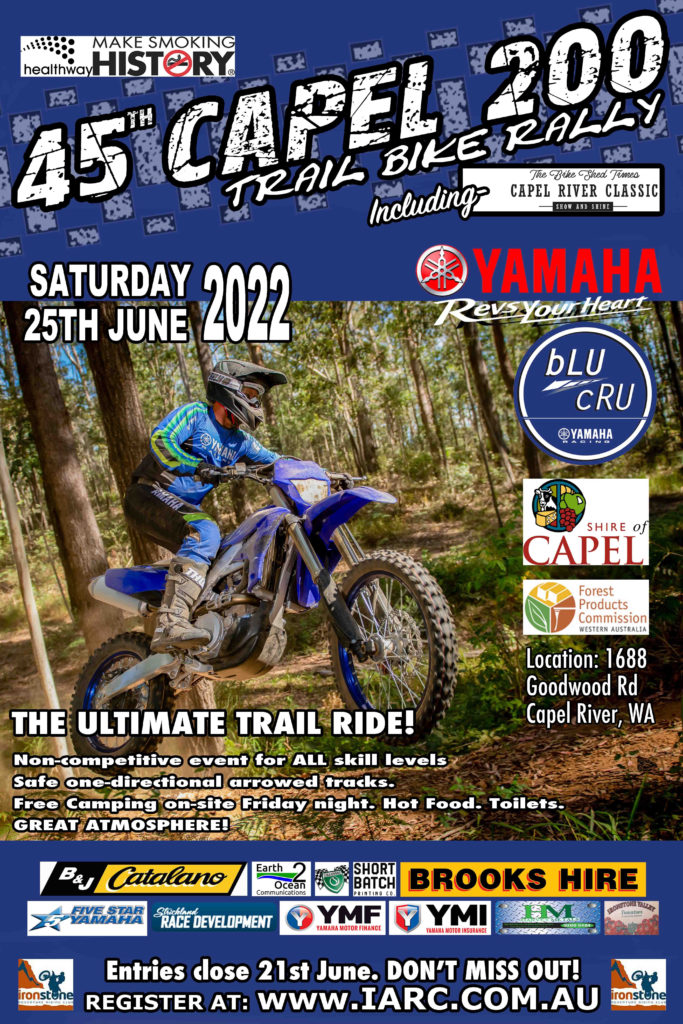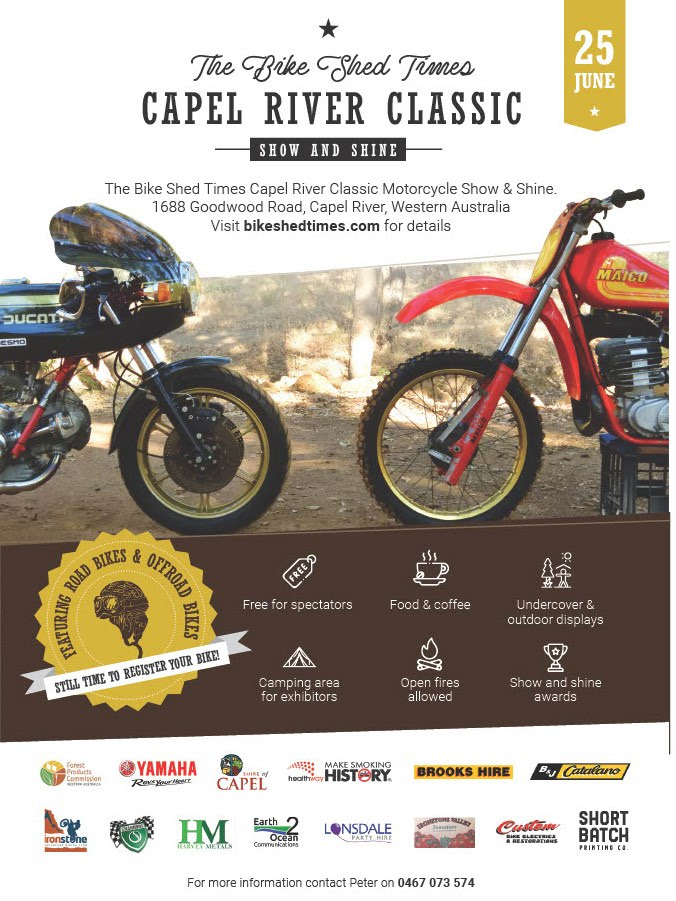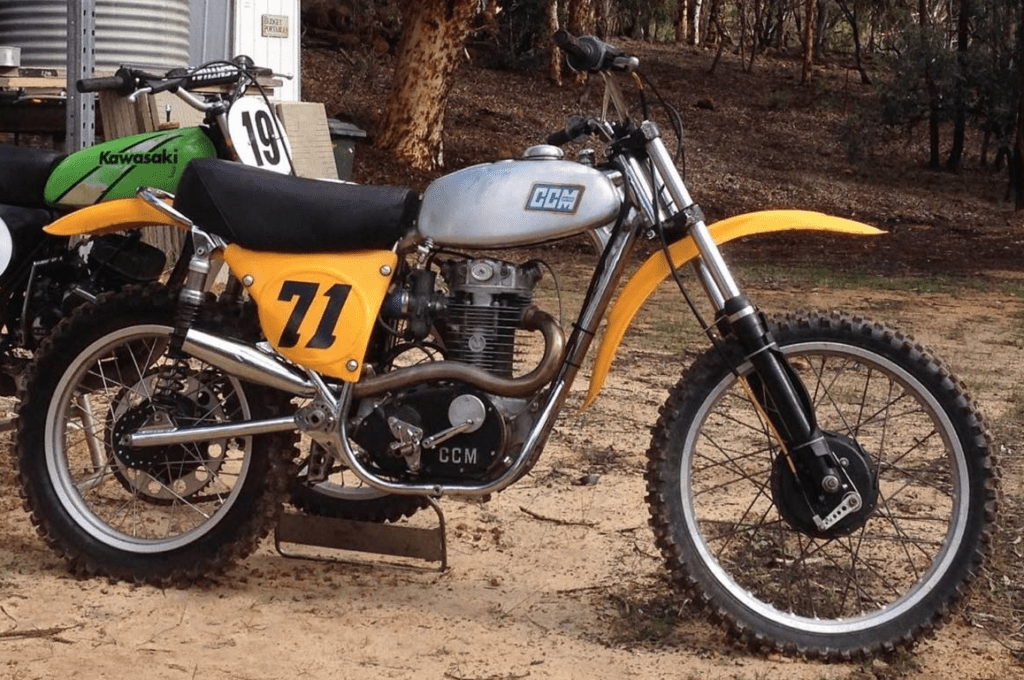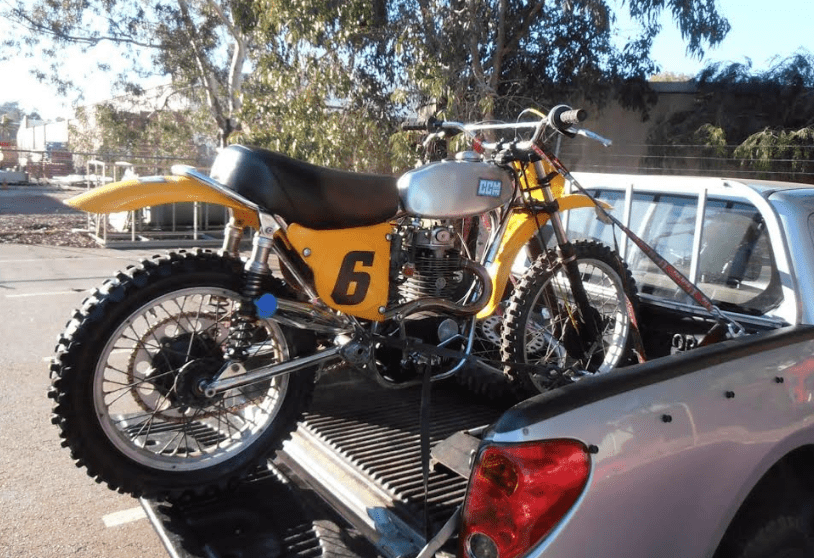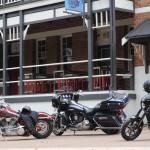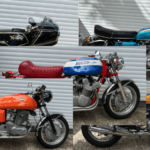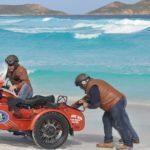
As the days count down to the inaugural The Bike Shed Times Capel River Classic, DAN TALBOT remembers the glory years of Clews Competition Machines — and flirts with the idea of finding one for himself
I have recently had an urge to return to dirt-bike riding.
Okay, maybe not that recent. It has remained with me at various levels since I hung up my Rossi boots. The upcoming The Bike Shed Times Capel River Classic incorporates the 2022 Capel 200, nowadays a non-competitive enduro-style event that has been running in various forms since 1977.
I competed in the first of those events on my 250 Bultaco Pursang. I can’t remember if I finished or not. Probably not.
In 1982 I returned to the Capel 200 with a brand-new Yamaha IT 465 and picked up third place. The Yamaha was an ideal machine for the purpose: a powerful, reliable two-stroke with cantilever suspension, adequate brakes and a large tank. If I was to get back into dirt bike riding a modern Yamaha would make sense, but why do something sensible?
I’ve long held a desire to own a CCM. In a 1970s world of two-stroke motorcycles, CCM were an outlier with their stonking big four-stroke engines. Costing roughly twice that of their Japanese counterparts, CCM took the world by storm without actually winning a world championship or even a British or Australian championship for that matter. These days, CCM folklore has reached mythical proportions and their machines are commanding very high prices.
Clews Competition Machines grew out of a cottage industry created by Allan Clews in Bolton, England. In the days before it was called motocross, Clews was a semi-professional scrambles competitor of some note. Wanting to gain the winning edge, Clews approached BSA for a works-level competition machine but was refused. A resourceful Clews then set about building his own machine using the BSA 500 MX as his base. He named his creation the ‘Stroka.’
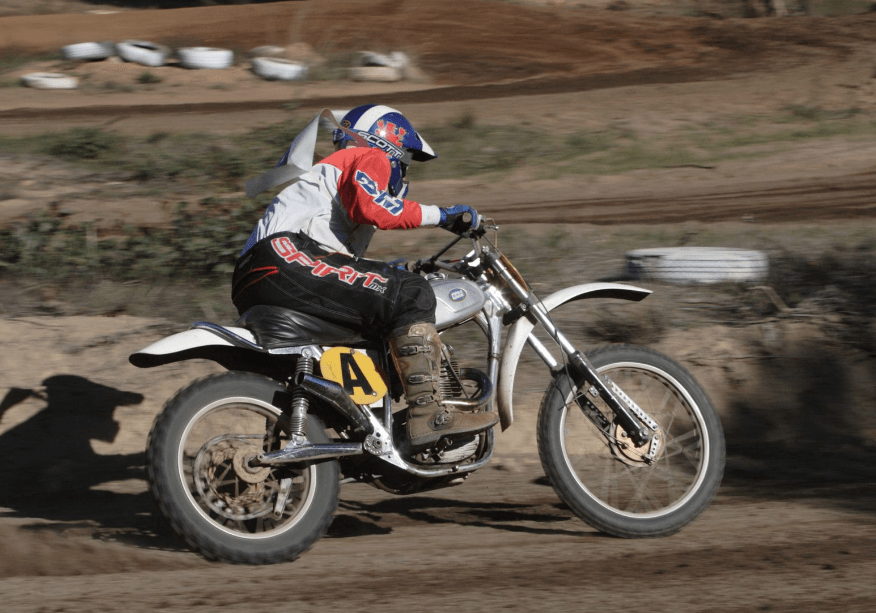
Each time Clews finished a machine, rather than go racing he was convinced to sell it. There quickly came a time when Clews realised there was an untapped market in big-bore, British thumpers so he gave up his ‘day-job’ and turned to full-time motorcycle manufacturing. Fortunately for Clews, BSA were struggling to keep the doors open and by ’72 they finally closed for good.
Clews again went to BSA seeking their residual works 500 equipment and this time he was successful. According to a 1977 newsreel piece, BSA insisted Clews take everything (presumably in terms of the 500cc singles) which amounted to 100 tons. Clews secured the haul for the princely sum of 750 GBP (about $7,500 AUD in today’s money).
By the time Clews had obtained the BSA stock, he was well versed in improving the performance of the B50 engine. Head, camshaft and carburation improvements no doubt helped, as did enlarging the engines from 498 to 545, 580 and eventually 608cc. He also designed his own frame which was described in the press as “light but robust.”
Vintage motocross reports occasionally point to engine failures on the 50+ year-old machines but broken frames do not appear to be a thing with CCM. Such was the convention of specialist UK builders of the time, eg Rickman and Cheney, the frames were nickel-plated. They could be described as ‘bling with purpose.’
One wonders how many BSA engines Clews was able to secure. From inception until 1980, when the company was acquired by the Armstrong Group, the number of motorcycles produced yearly rose from 39 machines in 1972 to 233 bikes in 1979 (Henshaw, 2009). By the end of the decade, slightly more than 1300 motorcycles were produced using the BSA-derived engine. Clearly at some stage Clews turned to building the entire engine in his Boulton workshop.
Throughout the seventies CCM gained a reputation that saw demand outstrip supply. Ironically, the greatest demands were from outside of the UK, with 60% of completed machines going to export, mainly the USA but also Europe, the Middle-East, Australia and even Japan. I vividly recall their introduction to Western Australia in the hands of Ritchie Kings and Mike Wellman.
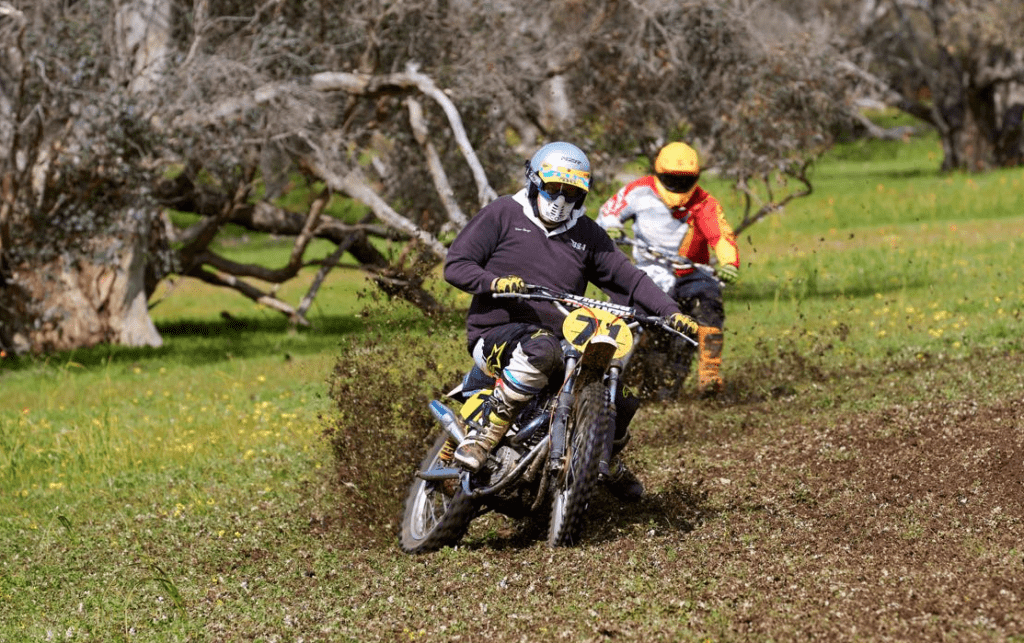
Mike Wellman fondly recalls his days on a CCM, sponsored by Clem Nunn the Australian Importer. Mike said the CCM performed best on the inland circuits with their harder surfaces. On the right track Mike said, “they would hook-up well, with less gear changes. They were good to slide and jump”.
According to Mike, the CCM was better able to get power to the ground without the need for “sophisticated suspension.”
“On the firmer country tracks, the CCM really came into its own,” he said.
Mike said the CCM bikes were well received at most tracks but especially out in the bush were the country crowds approved of the large four-stroke engine.
On the downside, the motorcycles had a total loss electrical system so, whilst in the pits, his and Ritchies’ machines would usually be found with the seats off having the batteries recharged. Writing in VMX magazine in 1998, Mike said: “Even in the pits CCM stood out with their seats removed and standing by cars with their bonnets up while their total loss ignition system was charged”
If possible, they would also seek out a position atop a hill as the kick-starts were CCM’s Achille’s heel and were known to break the kick quadrant, so bump starts were the preferred option. “CCM riders would usually be found parked at the highest point of the pits due to the fragile kickstart mechanism of the overgrown C15 (a BSA 250cc engine) making bump starting the best option” (VMX 1998).
As a kid on the sidelines, I noticed how hard Kings had to work getting his massive 4-stroke around the tight, sandy track that defined Shrubland Park in the seventies. What also stood out was the machine’s booming baritone could be heard in a sea of two-stroke exhausts, from wherever the CCM was on the track. Kings was one of the best motocross riders WA produced however, in Bunbury, he was off the pace with the CCM. Nevertheless, the look and sound of the motorcycle won hearts and minds, if not races.
Mike has great respect for his fellow CCM team-member. “It’s probably fair to say I rode in the shadow of Ritchie Kings, but when you are in the same team as such a legendary character who had won countless state championships it was an easy role to accept. Ritchie had a huge following in WA and was such a stylish neat rider that he had the admiration of all his fellow competitors. Of course, when you are riding you miss most of the action but I’m sure the sight of two CCMs circulating at the pointy end of the field provided a great deal of pleasure for many spectators” (VMX, 1998).
I know I was one.
Mike also spoke of admiration for five-times Scottish National Motocross Champion Jimmy Aird and South Australian Lester Rowley, both of whom piloted CCM motorcycles around Australia. In 2006 Jimmy returned to Australia to ride the National VMX Championships on the ex-Rowley 580 machine now owned by David Lawson.
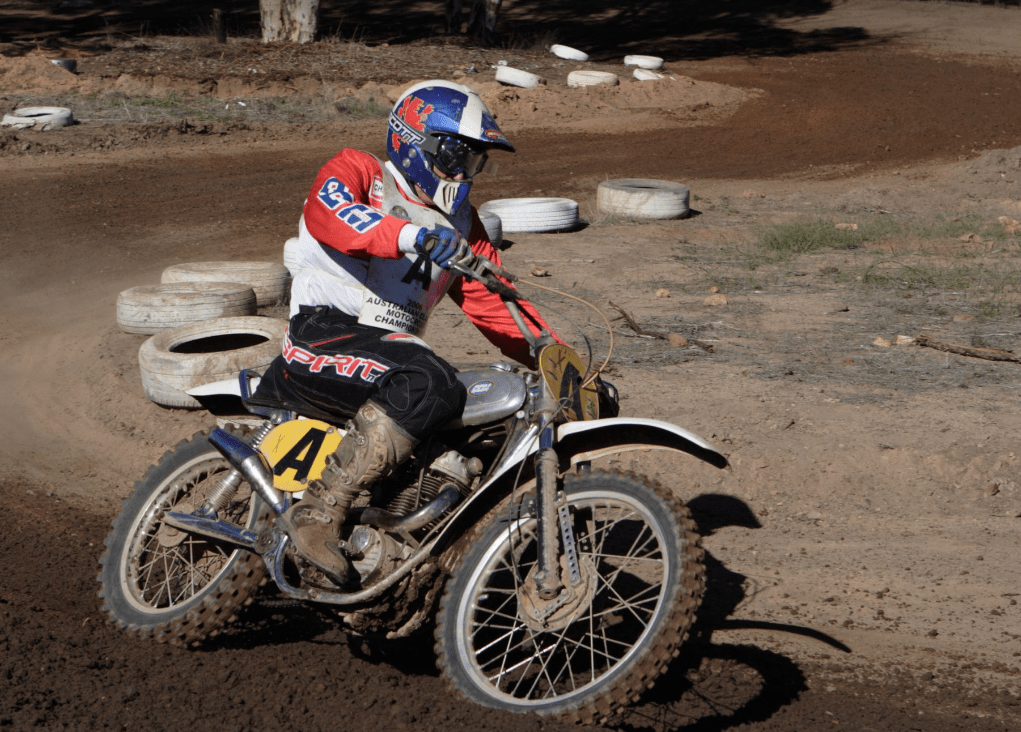
With the Armstrong group coming on board, CCM moved to Rotax 2-stroke engines, producing another 3,500 motorcycles in enduro, racing and military guise. The brand was kicked about for a few years between Armstrong, Bombardier and Can-Am brands. In 1987 Armstrong sold the military side of production to Harley-Davidson and CCM returned solely to Clews who went on to produce a long-running range of multipurpose motorcycles. But the classic, first generation CCM was not finished with in WA.
For several years after his official retirement from sponsored racing, Mike would participate in an annual grass track event held under lights at the close of the Osborne Park Show Agricultural Show.
“It must have been quite a shock to some of the local whiz kids to get blown away by someone they had not seen all season on an agricultural looking 4-stroke. In fact, it was an event where the CCM was ideally suited and we were just about invincible there” (VMX, 1998).
George Alan Clews passed away on 2 May, 2018, at the age of 79 years. CCM motorcycles are still being produced in Bolton, UK, by his sons Austin and Russell.
Vale Ritchie Kings (1943 – 1990) WA Motorcycle Hall of Fame inductee MWA H.O.F FINAL V1 (fliphtml5.com)
Thanks to Mike Wellman, David Lawson and Brian Watson for their assistance in writing this story.
EDITOR’S NOTE: We’re hoping to have at least one CCM at The Bike Shed Times Capel River Classic. If you have one and would be willing to bring it to Capel in late June, please enter here.
